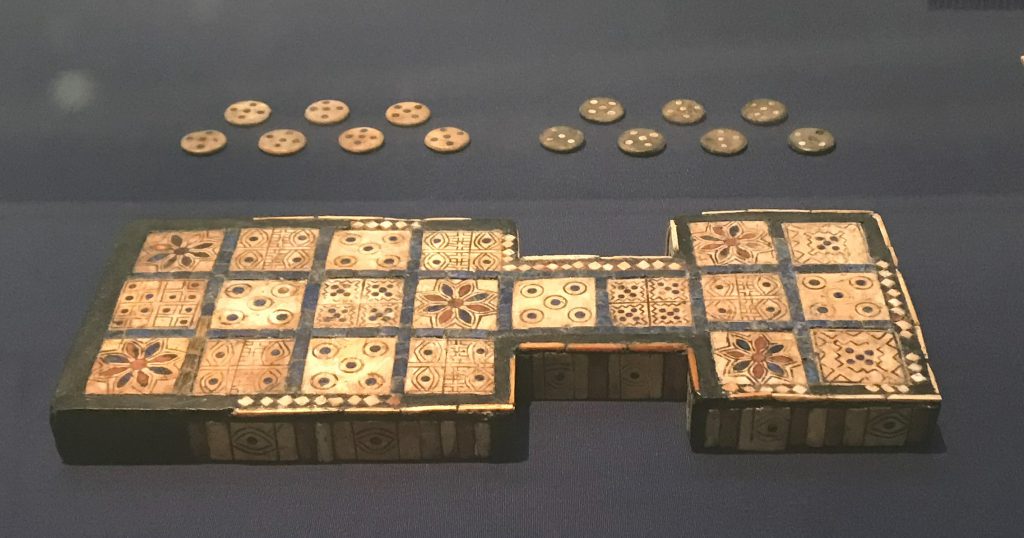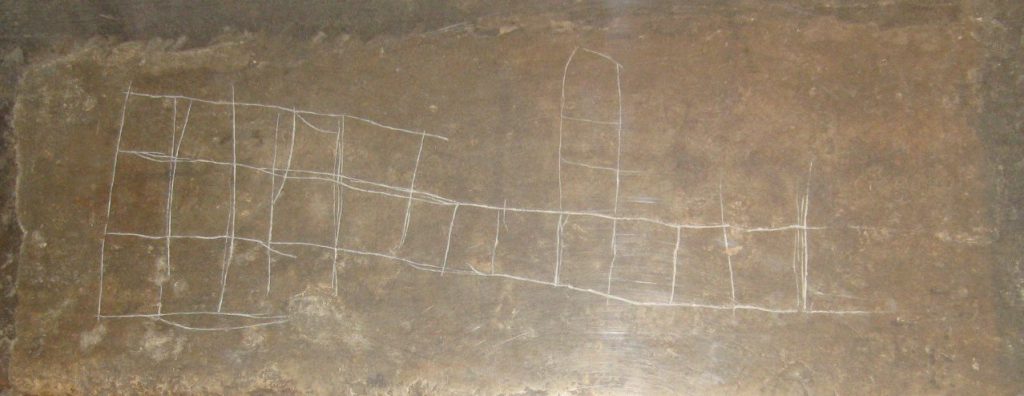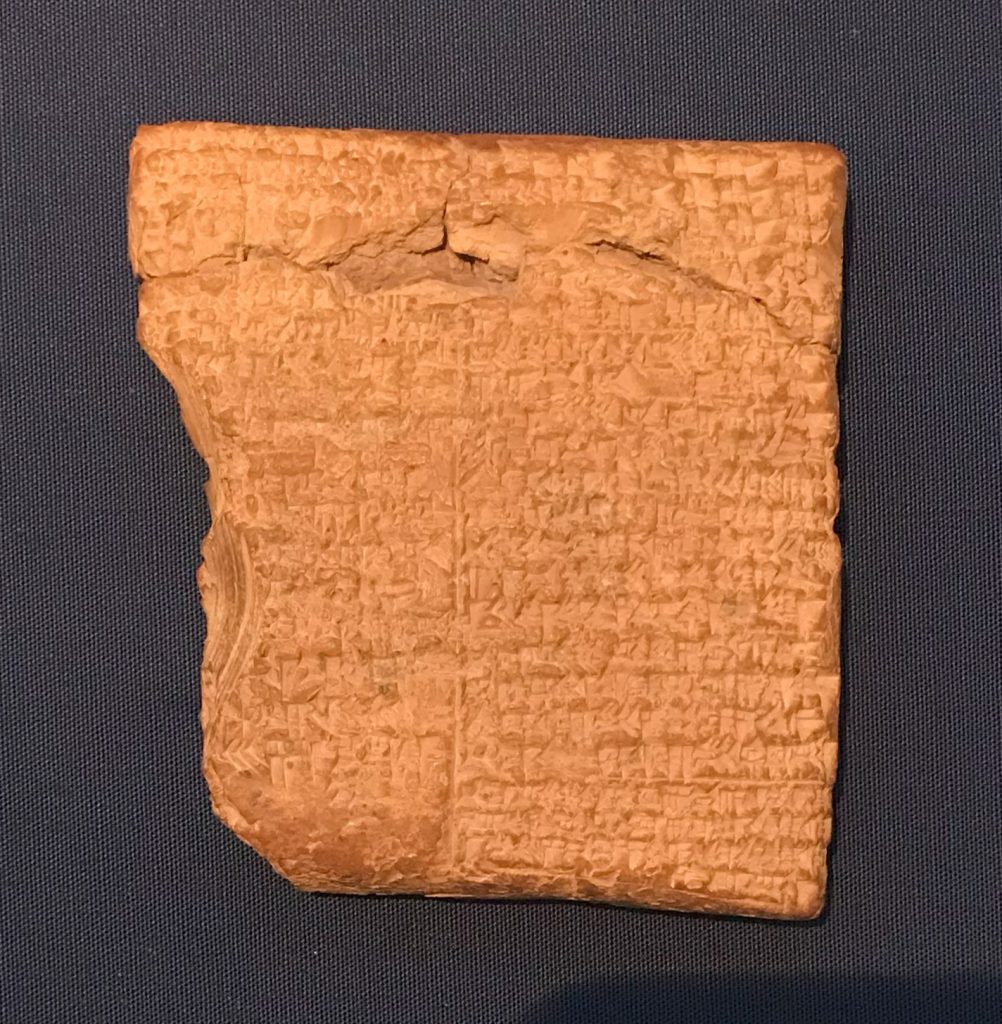This is part of a two-part article series on the Royal Game of Ur sponsored by Spartan Development
With the Spartan Games Ur: The Royal Game around the corner, we’ve donned our best Archaeology hats, brushed up on our cuneiform and gone to visit the British Museum to dig out a guide to the Origins of the world’s oldest Board Game.
Origins of Ur
How many of us own a stack, a shelf, a bookcase even, of modern board games? When we look over at copies of games we bought that we really, honestly, will get around to playing at some point, we’re participating in an ancient tradition stretching back to, and possibly beyond, Ancient Mesopotamia. If I was writing this as Bako “Lenoon” Asmoru, my counterpart scribe and board games player in the 3rd Millennium BC, I’d be thinking the same thoughts, thinking wistfully of wiling away time playing games — and most likely thinking of Ur: The Royal Game.
The Royal Game of Ur is one of the world’s oldest board games, and one of the most popular in the ancient world. It’s also a fascinating archaeological mystery, one that shows how archaeology, history and collection management can come together to slowly and painstakingly reveal past lives. Ur itself is similar, one of the first great cities of humankind, with a history of dense urban occupation from around 3,000 BCE. It was the centre (or simply a centre, I’m a bit behind on my Sumerian archaeology) of a powerful local and regional line of rulers – the First Dynasty of Ur. We know that this dynasty must have been powerful, with vast wealth, international trade routes and time to play board games in part due to the work of the pioneering scientific archaeologist Leonard Woolley, working out in what is now Iraq during the 1920s explosion in colonial archaeology. One of the most intriguing finds of the Woolley expeditions, at least to readers of Goonhammer, was a board game, now known as the Royal Game of Ur.

While we know that the game is ancient, we don’t know exactly how long people have been playing it. Dating the origin of the Royal Game has been difficult. Spectacular boards for the game, inlaid with precious stones, polished shell and coloured limestone were found in what Leonard Woolley described as the “Royal Cemetery,” part and parcel of a spectacular wealth of grave goods — nearly all of which he sent to the British Museum. Those boards date to somewhere around 2,500 BCE, and by the time incredible, highly detailed boards were being made, the game would most likely have already had a long history. If we think of it in modern terms, the Woolley board looks like a reissue of a classic – the high prestige copy; the limited edition version of a popular game. It’s “upmarket,” and it clearly took a huge amount of labour to create, detailed as it was with hundreds of beautifully worked shells, shards of limestone and polished wood.

Woolley found five game boards in the Royal Cemetery, and while I believe all five are in the British Museum only one is currently on display. The others vary aesthetically, but the board shape – the same one used by Spartan Games in Ur: The Royal Game – is identical. After Woolley found these boards though, they started to turn up in various other forms all over the Middle East, as far west as Cyprus and east to Sri Lanka, often with significantly different layouts. Due to the diligent work of hundreds of archaeologists and Assyriologists, we can see these layouts and plans as a process of iterative game design. Oftentimes variant boards will add additional tracks to the play space, occasionally parallel to the main “course,” or additional squares. Usually, though, they’ll have the “classic” 20 squares, a number of “rosettes” and support play around a core set of similar rules.

An example of this iteration in games design comes from the palace of Sargon II from Khorsobad, where presumably bored guards, or much later ruin-visitors, scratched a game board into the base of the statues. This is, again, in the British Museum, and I always like visiting it. The statues are giant, brave Lammasu, with all the religious and political importance such figures would have, but at some point someone thought, “fuck this, let’s play The Royal Game” and I really empathise with that. The Khorsobad version has 26 squares, with several running off at 90 degrees to the main course – a version of the game played by bored (board?) guards? Or someone trying to sketch something out from memory and fucking it up?

Across the 2000+ years the game was widely played, its place in society and culture varied from “a fun thing to gamble on” to “a way of divining the future of the players,” and the boards varied with it. It may have evolved into or from an almost equally ancient game, senet, or the Game of Twenty* and even possibly, over a long and no doubt varied history of design, into Irish – better known today as backgammon. An evolution of the Royal Game of Ur continued to be played quite widely in the Jewish community of India until migration to Israel after the Second World War – perhaps still to find widespread fame, and players, in the future.
*Both senet and the Game of Twenty may be older, but when I was playing, and reading about the Royal Game of Ur most more than a decade ago now, evidence was still fragmentary and unclear.
Playing Ur
While the boards for the game have turned up all over the place since the early 1930s, the rules were a mystery for much longer. It took until the mid-1980s when very possibly the greatest linguist of Ancient Mesopotamian languages since the 8th century AND board game expert Irving Finkel came across an untranslated tablet in the British Museum storeroom. It had been copied, transliterated, described as “a set of omens from the flight of birds,” and then largely forgotten about. Previous scholars — Benno Landsberger foremost among them — had correctly worked out that the tablet, and others around the world, related to the rules for a board game, but no one had really put two and two together (as far as I can tell). Finkel, though, had access to both multiple boards and multiple tablets, allowing him to produce a translation with reference to the game boards, and the first “full” ruleset for the game. The main tablet, written by Scribe Itti-Marduk, that describes the rules comes much later than the Woolley boards, but is itself a copy of much earlier material, showing the long prominence and importance of the game.

Itti-Marduk didn’t just write the rules, but also a guide to what playing the game meant, so if you’ll mind me taking a liberty – his rules are accompanied by an early form of Start Competing or Getting Started article. He explained the basics — that you move pieces along a board until you can move them off, capturing opposing pieces along the way — but also provided a lengthy commentary on them. According to the scribe, the game had become a way of predicting the future, or perhaps the past. You landed on squares because that was what was going to happen to you, or your crops, or your family – or perhaps as a form of spiritual revenge or reward for things you had already done. It’s less “land on this square if you want X to happen,” and more “landing on this square means X has happened, or will happen soon.” The spirit of his commentary is very much in the Goonhammer house style: Occasionally dry, but certainly not without wit.
If the astragals score 7,
The Rooster sits in the seventh house.
Should it land on a rosette, there will be an
abundance of fine beer for the pack.
If it does not land on a rosette,
There will be a deficiency of fine beer for the pack– Tablet of Itti-Marduk, Translated by Irving Finkel
We’ve all been there, right?
The rules translated and interpreted by Irving Finkel have become the standard rules of the game. Finkel presents a board game with similarities to ludo but with an additional layer of strategy – still very luck based, but in the same way as backgammon is. You’re not in control of how far pieces move, but the choices of which pieces, when to move and what to do remain open to you. Finkel’s version is one of the less combative versions of the game, and most suited to the divinatory style of play. The majority of the squares are “safe,” where your pieces cannot be captured. It’s a fairly considered, non-interactive game as a result. Your pieces move in quite a stately fashion, with a sprint across the dangerous tiles where your enemy might snap you up very much the winning strategy.

There are other rulesets too, emerging either from subsequent translations or through modern playtesting. They’ll often reduce the number of “safe” squares to make the game more combative, or they’ll work to make positioning more important. Much of that work has been carried out by experiment — Irving Finkel himself tried out different rules, dice, board game positions and layouts to find one that seemed to best work with the rules as laid out by Itti-Marduk and others. It’s been mathed-out, with an excellent work that I barely understand from Raposo and Lamont giving you the best possible strategy should you wish to mercilessly crush your enemies and land on only the most auspicious squares for your crops.
I came across the Royal Game of Ur when I was at University, but what hooked me on it was an article on cultural transmission from Voogt, Dunn-Vaturi and Eerkens which used similar methods to my own research to explore the related (possibly same) game 20 squares. If you dig into it, (and it’s a nicely accessible article too!) you can see how and why Ur: The Royal Game changed over time, how it remained important to those who played it and stayed popular over millennia.
It’s great to see that is still happening. The Royal Game of Ur is still changing, evolving and hopefully will find new audiences. You can check out our review of the Spartan version here, and I hope this brings a new popularity to this most ancient of games. In our next Ur article we’ll have a deep dive into changing strategy, rules and tactics to see how Ur: The Royal Game has taken inspiration from history for new and exciting play possibilities.
Questions, Comments, Suggestions? Contact@goonhammer.com or leave a comment below.


